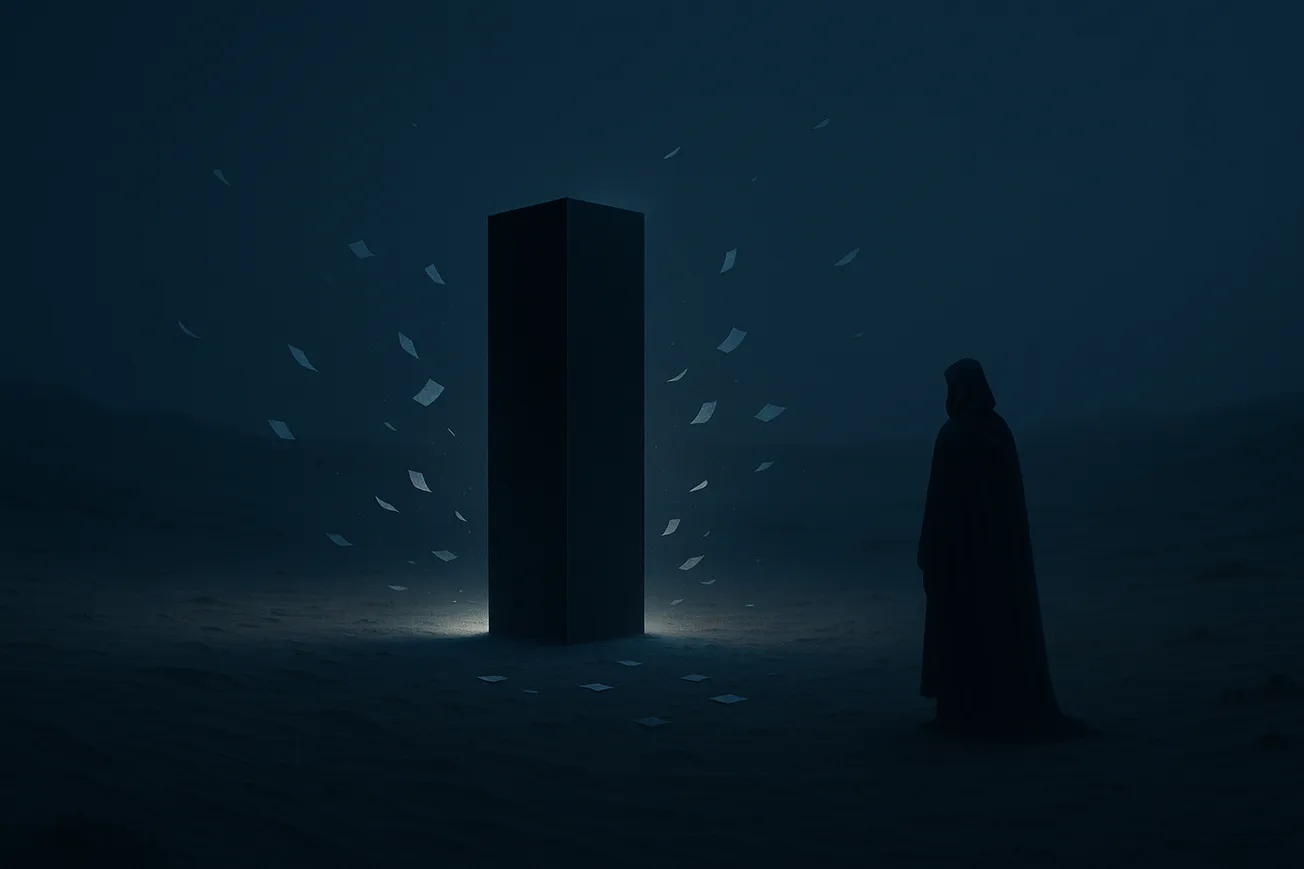🌈 The Fractal Story Engine | Mind & Meaning | (3) MM-002-S
They say it began with a question too large for language.
The philosopher was old, but not in the usual sense. He had worn out too many names, outlived a dozen definitions of truth, and once fasted so long he forgot the word “hunger.” He rarely spoke anymore. Words, he had learned, could only trace the outline of knowing. So instead, he built.
The machine came into being over time. Not through invention or revelation, but through fragments and remembered dreams. A gear unearthed from sand. A sound that summoned blueprints while he slept. He followed the design as though remembering something he had never learned, assembling pieces until a finished form emerged: a cabinet of polished obsidian, with no hinges or seams. Just a slot and a switch.
He called it the Belief Eraser.
Its operation was quiet. You would write a belief on a slip of paper, slide it into the slot, and press the switch. That was all. The machine did not hum or glow. It waited. And then the belief vanished. Not through amnesia, but as if it had never existed. It did not leave a hole. It left stillness.
He tested it on simple ideas. That black cats bring misfortune. That north is up. That apples fall because something pulls them. Each time, understanding unraveled. He would stare at the same tree for hours, no longer certain what gravity was. He wandered in spirals, unable to orient himself toward a direction. The absence felt disorienting, but also clean. Like space returning to itself.
One night, under a moonless sky, he wrote a more delicate sentence: I believe I am a self.
He pressed the switch.
Afterward, there was awareness, but not from a center. Thought occurred without direction. Memory appeared scattered, unanchored by narrative. The room no longer felt like a room. It did not feel like anything. Time became a widening surface. He saw belief not as a sequence, but as a shape.
There was still perception, but it moved without a fixed point. Identity had once offered a kind of gravity, but it had always been optional.
Others came.
A monk arrived next. Then a child. Then an archivist who brought a belief too old for words, encoded only in melody. One by one, they placed their notes into the slot. They surrendered weight they no longer wished to carry.
The world began to change. It happened slowly, yet unmistakably. People no longer recalled the meaning of borders. They stopped ranking cuisines. They questioned whether eyes must always look ahead. A different kind of silence emerged, not from lack but from release.
Still the machine remained.
One day, a young girl placed in the slot a note that said: I believe this machine exists.
She pressed the switch.
The machine vanished. So did all memory of it. The field where it had stood grew wild with grass. A heron landed beside a smooth patch of earth where someone had once cried while letting go of the belief that they were unworthy of love.
No one remembered the machine.
But sometimes, when someone becomes very still, almost reaching the edge of what they believe themselves to be, they feel it. A subtle loosening. The moment before something slips away. They do not know why they smile, but they do.
Some say this is how the world began again.
Not through fire. Not through flood.
But through forgetting.

